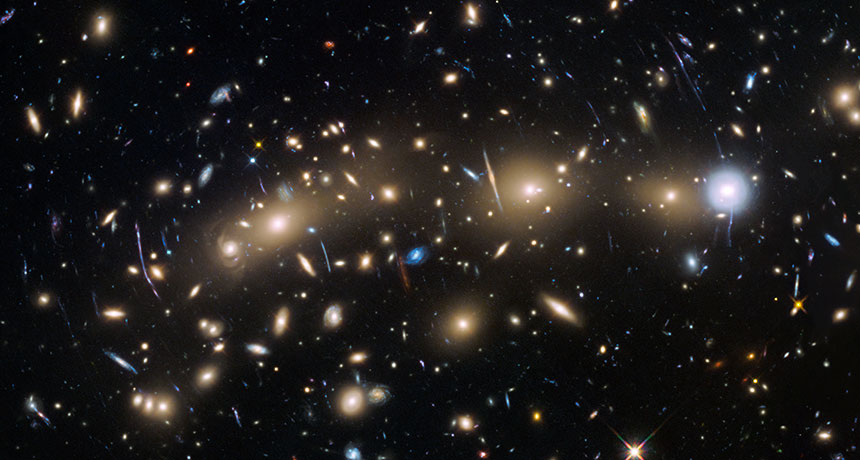Nearby galaxies put a lens on hundreds of distant ones

Gravity from galaxy cluster MACS J0416.1–2403 (pictured), which sits about 5 billion light-years away, warps and magnifies light from far more distant galaxies (arcs).
NASA, ESA and the HST Frontier Fields team/STScI







